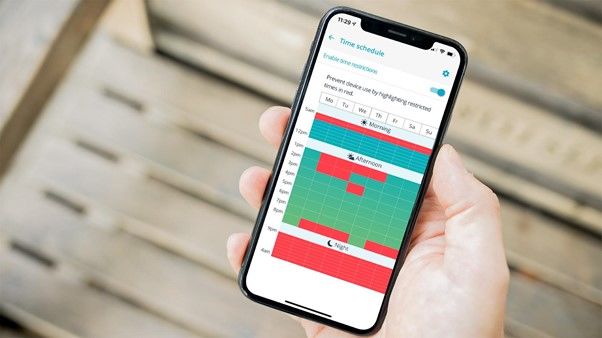Don’t get us wrong: technology has been an invaluable tool which has helped bring families together when they can’t meet up in person and it has helped kids to keep in touch with grandparents, friends and classmates. But all this screen time isn’t good for them. The problem comes when you say it’s time to turn off the iPad, phone or laptop, and you can’t supervise what they’re doing on those devices while you work, cook and clean. Most devices offer settings which let you restrict the types of content kids can see and they might even let you choose the times they can be used. But this is control is often too coarse and doesn’t necessarily prevent children from playing games when they should be doing schoolwork. Worse, if the time runs out on one device, they can just pick up another one and carry on. Chromebooks are especially popular for schoolwork, being inexpensive alternatives to pricey Windows laptops or MacBooks. Most parental control software doesn’t work on Chromebooks, but Qustodio does. Instead of setting limits on each device, Qustodio works by understanding which devices a child can use and applying those limits on all of them. If you want them to only use screens before and after school, with a maximum time limit of 2 hours per day, that’s easily done. Want to allow them a little extra time to finish that episode on Netflix? No problem. If you need to block access to certain apps while they’re doing online school, you can.
Complete control
One of the problems with a lot of parental control software is that it only lets you set a single period during the day when kids can use their devices. Qustodio works using a grid system. Simply tap the hours you want to block access and kids can only use screens outside of those hours.
From the parent app on your phone you can tweak this any time you like to block or unblock access. The schedule and overall screen time limits can be different every day, too. It’s completely flexible. Obviously, you’ll want to control which apps your kids can use. So long as the app has been launched at least once since the Qustodio app was installed on the child’s devices, you’ll be able to block or unblock it from the separate Parent app, or the online dashboard. Best of all, you can set individual time limits per app. So even if you’ve generously set a limit of 5 hours of screen time per day, you can restrict the use of TikTok, Instagram or any app to a lower amount of time. You’ll create a profile for each child and assign devices to them, meaning you can choose time limits and which apps each child can use individually. You’re in complete control.
Location, location
When your kids are travelling to school or out with friends Qustodio keeps tabs on their whereabouts and can show their location on a map. Set places such as home and school and the app will notify you when they leave or arrive at one of them, but you can track their location in real-time too. See what they’re up to It’s simple to see how much screen time a kid has used and a timeline showing which apps they’ve been using, and how long they used them for. If they search on Google or YouTube, the Parent app will show you what they typed so you can chat to them if you see anything inappropriate. In fact, thanks to web filtering, they won’t be able to access any inappropriate websites and you’ll see a list of sites which Qustodio has blocked access to. If there are specific blocked sites your child wants to access and you’re ok with this, you can add them to the list of exceptions. It doesn’t matter which web browser they use. Even if they switch to private browsing, Qustodio is there to protect them with its smart filters. On Android phones, Qustodio also lets you keep track of who your child is calling and texting, and gives you the option to block certain contacts. To find out more about Qustodio, click here. Tech Advisor readers can also get a special discount on a Qustodio subscription. Until April 2nd 20201 you can get 20% off all premium plans using the discount code IDG20
